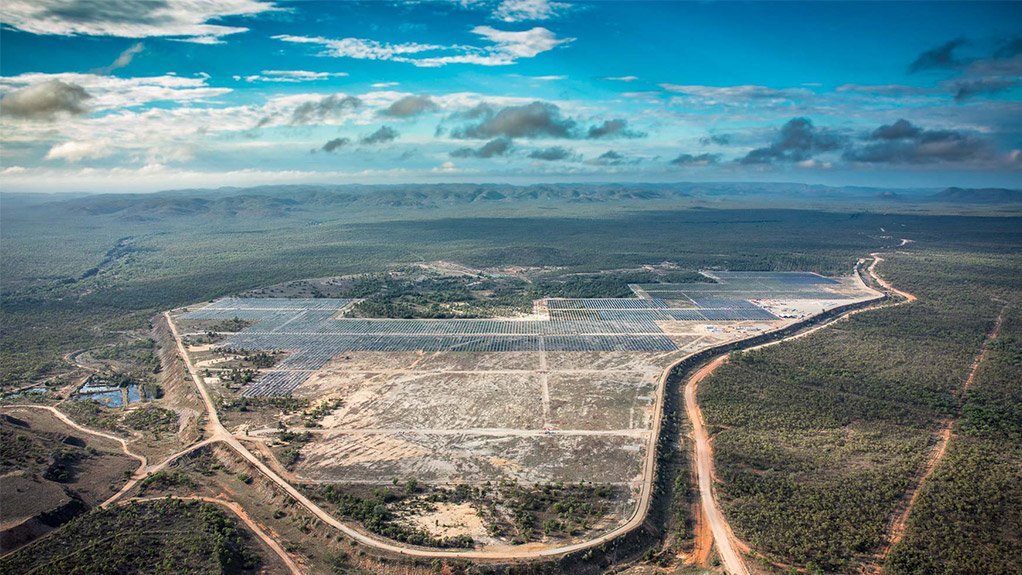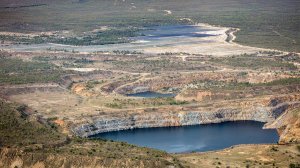Abandoned mines punted as potential pumped-storage scheme sites



ENERGY HUB Genex Power is implementing a solar farm and pumped hydro energy storage scheme at the defunct Kidston gold mine in Queensland, Australia
Photo by Genex Power
ENERGY HUB Genex Power is implementing a solar farm and pumped hydro energy storage scheme at the defunct Kidston gold mine in Queensland, Australia
Photo by Genex Power
Several abandoned mine sites in South Africa and Australia could be sustainably used, particularly as pumped hydro energy storage sites, says renewable-energy generation and storage provider Genex Power executive director Simon Kidston.
Although underground and opencast mine sites could be used for pumped-storage hydro schemes, Kidston stresses that the focus should be on sites that are close to electricity transmission infrastructure and have strong pitholes with stable rock and ground conditions.
He believes that South Africa could benefit from significant pumped hydro energy storage scheme asset development.
Kidston spoke in November at the Science Business Society Dialogue conference, in Johannesburg, on linking science, society, business and policy for the sustainable use of abandoned mines in the Southern African Development Community (SADC) region. Underground pumped hydro energy storage schemes were highlighted at the conference as a sustainable and innovative land use option for such mine sites. Genex Power’s progress in this technology asset offering was one of several matters discussed.
The company is implementing a solar farm and pumped hydro energy storage scheme at the defunct Kidston gold mine, in Queensland, Australia. This project is to be the first integrated solar/pumped hydro project in the world, according to Kidston.
The site for the project had been the site of one of Australia’s biggest gold mines for more than 100 years, and includes a tailings storage facility, two enormous openpits from past mining activities that are now filled with water, the required water and electricity infrastructure to connect to the grid through an existing transmission network, a substation, road access, an airstrip and staff accommodation.
The gold mine, which provided an output of 3.5-million ounces over its life-of-mine, closed in 2001 and was placed under care and maintenance, with the previous owner, Barrick, undertaking a $40-million rehabilitation plan.
Genex Power’s Kidston solar project is being implemented in two stages. Stage 1 involves the development of a 50 MW solar farm, which has now been completed and is supplying electricity to the grid and generating revenue. This stage is predicted to generate 145 GWh/y of renewable electricity, Kidston says.
The second stage, comprising a 270 MW solar farm, is co-located with the Kidston pumped-storage hydro project of 250 MW.
The strategy for the solar project is to power the pumped hydro scheme during the day using the solar energy generated to pump the water back up into the upper reservoir.
The cost of the Stage 1 solar project was A$115-million ($92-million), while the estimated cost of the pumped-storage hydro project is A$330-million, or R3.3-billion, and the cost of the Stage 2 solar farm is estimated at A$400-million, or R4-billion.
“Stage 2 is predicated on reaching financial close in the second half of the 2018 calendar year, [when] we will sign all the contracts with the funding partners and the energy offtake; from that point onwards, we can commit to construction,” Kidston says.
Genex Power is in the final stages of completing funding for the second stage of the project and the company’s key focus will include securing a long-term revenue offtake deal with a major Australian energy market participant.
The Stage 2 solar farm has a projected 18-month build, while the hydroproject has an estimated three-year build, which means the project will be completed in 2021.
Kidston believes that the former opencast gold mine site is a good location for the integrated energy hub, owing to its existing infrastructure.
The tailings storage facility has proven “an ideal location” for the solar farm, which requires flat terrain with consistent ground conditions. There were also no issues – from an environmental perspective – hampering the clearing of land for use, as the tailings facility had been rehabilitated. The two old mine pits will be used as the reservoirs for the pumped-storage scheme.
Genex Power also has an existing environmental authority for the area, and a freehold that, in Australian law, “extinguishes” native title claims. The site was drilled extensively by the previous mine owners, subsequently providing the company with “a wealth” of information about the geology, pitwall stability and fauna and flora that can be used as references for the project.
The company has received strong support from the various state governments in Australia.
“The governments have been unbelievably supportive of this development and it is primarily because they see this abandoned mine as having a sustainable economic future, and . . . contribution of this asset will make in terms of energy storage and grid reliability,” Kidston concludes.
Article Enquiry
Email Article
Save Article
Feedback
To advertise email advertising@creamermedia.co.za or click here
Comments
Press Office
Announcements
What's On
Subscribe to improve your user experience...
Option 1 (equivalent of R125 a month):
Receive a weekly copy of Creamer Media's Engineering News & Mining Weekly magazine
(print copy for those in South Africa and e-magazine for those outside of South Africa)
Receive daily email newsletters
Access to full search results
Access archive of magazine back copies
Access to Projects in Progress
Access to ONE Research Report of your choice in PDF format
Option 2 (equivalent of R375 a month):
All benefits from Option 1
PLUS
Access to Creamer Media's Research Channel Africa for ALL Research Reports, in PDF format, on various industrial and mining sectors
including Electricity; Water; Energy Transition; Hydrogen; Roads, Rail and Ports; Coal; Gold; Platinum; Battery Metals; etc.
Already a subscriber?
Forgotten your password?
Receive weekly copy of Creamer Media's Engineering News & Mining Weekly magazine (print copy for those in South Africa and e-magazine for those outside of South Africa)
➕
Recieve daily email newsletters
➕
Access to full search results
➕
Access archive of magazine back copies
➕
Access to Projects in Progress
➕
Access to ONE Research Report of your choice in PDF format
RESEARCH CHANNEL AFRICA
R4500 (equivalent of R375 a month)
SUBSCRIBEAll benefits from Option 1
➕
Access to Creamer Media's Research Channel Africa for ALL Research Reports on various industrial and mining sectors, in PDF format, including on:
Electricity
➕
Water
➕
Energy Transition
➕
Hydrogen
➕
Roads, Rail and Ports
➕
Coal
➕
Gold
➕
Platinum
➕
Battery Metals
➕
etc.
Receive all benefits from Option 1 or Option 2 delivered to numerous people at your company
➕
Multiple User names and Passwords for simultaneous log-ins
➕
Intranet integration access to all in your organisation
















